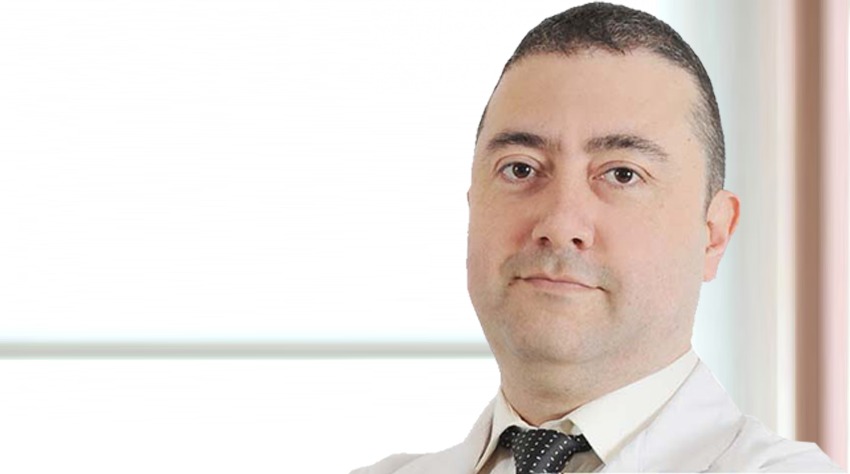Salvage Surgery with Iliac Wing Autograft Following Total Calcanectomy for Calcaneal Chondrosarcoma
Primary malignancies originating in the calcaneus are exceptionally uncommon, making up fewer than 1% of primary tumors in the skeletal system. The prevalent types include osteosarcoma, chondrosarcoma, and Ewing’s sarcoma.1 Ensuring effective management at the local level is a crucial aspect of treating primary malignant bone tumors. Amputation, a frequently employed surgical approach for achieving local control due to its relative technical simplicity, results in limb loss, leading to persistent pain, mental distress, and various complications.2 Surgery remains the main treatment for conventional chondrosarcoma due to the tumor’s resistance to traditional chemotherapy and radiation, attributed to its slow growth, low mitotic division, and poor vascularity.3 Chondrosarcomas are primarily treated with a wide surgical excision, and although amputation was historically common for local control, advances in imaging and reconstruction now allow the majority of patients to undergo limb-salvage procedures.4,5 Reconstructing the irregular shape and weightbearing function of the calcaneus poses a difficult and technically challenging task. Several reconstructive methods involving allografts, autografts, or prostheses have been suggested.6-11 In this study, the complete removal of the left calcaneus was detailed, carried out for chondrosarcoma. Following the calcanectomy, successful limb salvage was achieved through reconstruction using an iliac wing autograft, and the recovery, including prompt wound healing, was observed.
Case Report
A 32-year-old male patient first presented to an orthopedic clinic due to left heel pain and swelling.
The patient endured pain that occasionally radiated
toward the ankle for 6 months, even at rest. The
symptoms were aggravated with weightbearing, as
well as varus or valgus rotational movements.
Systemic symptoms such as fever, weakness, and
other discomforts were absent. Clinical evaluation
of the patient’s left heel revealed slight tenderness
and mild swelling without any skin alterations. He
was evaluated by radiograph, and then referred to
an orthopedic oncology surgeon at another hospital.
According to the patient’s history, two resection surgeries were performed after the percutaneous
fine-needle aspiration biopsy. The biopsy findings
indicated the presence of chondrosarcoma. At the
follow-up exam, recurrence was diagnosed. The
patient was admitted to our institution in June 2018.
Physical examinations revealed swelling and
clear tenderness on both the inner and outer
aspects of the left hindfoot. Axial percussion pain
was confirmed. A vertical incision of 7 cm was present posterior to the lateral malleolus (Fig. 1). No
indications of ecchymosis, sinus tract, erythema,
abnormal skin temperature, or local lymphadenopathy were noted. The eversion and inversion motion
of the left ankle showed some restriction and elicited pain. Anteroposterior and lateral radiographs
of the left foot were performed. The images showed
a lytic lesion with no periosteal reaction located at
the posterosuperior aspect of the calcaneus (Fig. 2).
In addition to radiographs, supplementary imaging modalities such as computed tomography (CT)
scans and contrast-enhanced magnetic resonance
imaging (MRI) were conducted. The CT scans
showed expansile bone destruction involving the
medial portion of the left calcaneus with irregular
borders. The axial and sagittal CT images revealed
discontinuity in the partial lateral and superior cortex of the impacted calcaneus, likely resulting from
the two previous resection surgeries (Fig. 3). In
Figure 1. Preoperative clinical picture showing the previous incision for surgeries.
Figure 2. Presurgical lateral radiographs of the left foot.
addition, contrast-enhanced MRI scans identified an osteolytic lesion in the posterolateral calcaneus. Significant enhancement of the surrounding sclerotin edema and adjacent soft-tissue edema was clearly observed on T2-weighted sequence. There was infiltration observed in the Achilles tendon. According to contrast-enhanced MRI scans (Fig. 4), there was no invasion detected on the subtalar articular surface of the left talus. A conclusive diagnosis was pursued through percutaneous fine-needle aspiration biopsy at a previous medical institution. The histologic findings from the biopsy revealed the presence of a myxoid tumor with significant cell infiltration, extending between bone trabeculae and into the soft tissue, without evident pleomorphism (Fig. 5). The histomorphologic report confirmed the diagnosis of chondrosarcoma, prompting the recommendation for surgical resection. In opting for a limb-sparing approach, a total calcanectomy with iliac bone autograft was performed for functional reconstruction. The patient was placed in the right lateral decubitus position under general anesthesia. The calcaneus was exposed through a 10-cm lateral curved incision, originating from the calcaneocuboid joint, passing through the inferior margin of the lateral malleolus, and extending to the middle between the Achilles tendon and the posterior aspect of the
Figure 3. Sagittal (A) and axial (B) images from
presurgical computed tomography images.
Figure 4. Presurgical T2-weighted sagittal (A), coronal (D), and axial (B) magnetic resonance images (MRIs); T1-weighted sagittal MRI (C).
Figure 5. A grade 2 chondrosarcoma demonstrating increased cellularity, and an increased nuclearto-cytoplasmic ratio. A lobular arrangement is noted.
lateral malleolus, with the removal of the previous incision scar due to the potential contamination of neoplastic tissues (Fig. 6). A complete calcanectomy was carried out, involving the resection of the
Figure 6. Preoperative clinical picture showing the previous incision for surgeries and the desired lateral incision (marked with ink).
Figure 7. Intraoperative site after calcanectomy. The green arrow shows the proximal stump of Achilles tendon.
distal portion of the Achilles tendon from 4 cm above its insertion point (Fig. 7). Resected tissues and calcaneus were reserved as samples for pathologic examination (Fig. 8). A 7-cm curved incision
Figure 8. Intraoperative photographs of resected tissues and calcaneus.
Figure 9. Full-thickness ilium block and intraoperative site after the autograft was taken.
was initiated from the left iliac tubercle to the posterior superior iliac spine. Blunt dissection was conducted to expose the right ilium. A full-thickness ilium block measuring 6 5 4 cm was extracted using an oscillating saw (Fig. 9). While extracting, efforts were made to shape the iliac autograft to resemble that of the calcaneus (Fig. 10). The autograft was affixed to the talus using two screws, implementing cuboidal joint arthrodesis but without specific fixation to the cuboid. An internal fixation procedure was conducted on the talonavicular joint without arthrodesis to stabilize the connection between the midfoot and hindfoot. While drilling for the internal fixation with a cannulated screw in the talonavicular joint, the guide Kirschner wire was broken. The proximal stump of the Achilles tendon was linked to the talus with a 5.5-mm anchor
Figure 10. The harvested ilium block was shaped as calcaneus before the cavity was filled.
Figure 11. Intraoperative site after autograft implantation. The green arrow shows the reattachment of the proximal stump of the Achilles tendon to the dorsal talus.
(Fig. 11). After wound suction, the leg was plastered to immobilize it. Radiographs were taken after the surgery (Fig. 12). The final histopathologic diagnosis was chondrosarcoma (Fig. 5). The patient was instructed to be nonweightbearing on his affected foot for the first 3 months postoperatively but was allowed to walk with the assistance of a crutch. After 6 weeks, the leg plaster was removed. Subsequently, the patient began to do active and passive ankle exercises. Partial weightbearing was allowed at 3 months. The patient was followed for 67 months, with no evidence of recurrence or postsurgical complications (Fig. 13). The patient complained of no pain and attained nearnormal gait. The range of motion of the tibiotalar
Figure 12. Postsurgical anteroposterior radiograph of the left ankle (A), and lateral radiograph of the left ankle (B).
Figure 13. Postsurgical anteroposterior radiograph of the left ankle (A), and lateral radiograph of the left ankle (B) and calcaneal radiograph of the left foot (C) at the 67-month follow-up.
joint was 0˚ of ankle dorsiflexion and 45˚ of plantarflexion (Fig. 14).
Discussion
Chondrosarcomas are rare malignant bone tumors arising from cartilage-producing cells and are considered the second most common sarcoma of bone following osteosarcoma; nonetheless, chondrosarcoma is rare in the foot, accounting for only 0.5 to 2.97% of cases across all locations.9,12,13 Historically, extremity sarcomas were managed with amputation, but limb-sparing surgery coupled with external beam radiation therapy has become the standard of care.14 On the other hand, amputation is still necessary in highly selected cases, particularly when there are no limb-sparing salvage options and/or sufficient limb function is threatened or lost.15-17 An unfortunate indication also includes local recurrence following contamination of the tumor bed by prior unplanned
Figure 14. The left foot of the patient at the 67- month follow-up evaluation after total left calcanectomy and iliac bone autograft reconstruction. Range of movement of the left ankle: dorsiflexion (A), plantarflexion (B).
surgery, particularly in the distal extremity where sarcomas may be mistaken for benign lesions.18,19 In our case, although there was local recurrence— probably because of unplanned surgery—there was no involvement of multiple compartments that would require composite tissue resections including muscle compartments, major blood vessels, nerves, and bone. With this justification, we planned the calcanectomy and reconstruction using an iliac wing autograft.
Various reconstructive options have been described, including allografts, autografts, reconstruction with cement, and prostheses.10,20 Each option has its advantages and disadvantages. Allografts carry the risk of infection, nonunion, and collapse related to allografts,21 while prostheses may be associated with complications such as loosening and infection.10,20 Autografts offer biological compatibility and the potential for integration with the host bone. The iliac wing provides ample cancellous and cortical bone that can be shaped to match the resected calcaneus. It also offers excellent vascularity, promoting graft incorporation and healing.6,22
In this case, we opted for an iliac wing autograft for reconstruction. The iliac crest also has a natural curvature that resembles the calcaneal tuberosity.22 The surgical procedure involved meticulous tumor resection with negative margins, followed by careful shaping of the iliac wing autograft to replicate the calcaneal anatomy. The autograft was secured to the talus, and internal fixation was performed to stabilize the talonavicular joint. The Achilles tendon was reattached to maintain ankle function. Our patient experienced an uneventful postoperative course with no evidence of recurrence or complications at the 67-month follow-up. He reported no pain and achieved near-normal gait with satisfactory ankle range of motion. The presented case shares similarities and differences with previous reports in the literature. Similar to other studies, this case also highlights the challenges in managing calcaneal tumors and emphasizes the importance of limb-salvage procedures. The use of an iliac wing autograft for reconstruction aligns with the recommendations of Rosli et al,6 who emphasized the suitability of biological reconstruction for optimal functional outcomes. The positive long-term results observed in this case, with no evidence of recurrence or complications at 67 months, are consistent with the findings of Chen et al,22 who reported excellent clinical scores and radiological outcomes at the 60-month follow-up after a similar procedure.
Nevertheless, this case also presents some unique aspects. Unlike the cases reported by Chen et al22 and Rosli et al,6 where the tumors were benign, the present case involved a chondrosarcoma—a malignant tumor. Despite the malignancy, the surgical team opted for a limb-salvage approach, demonstrating the feasibility of this option even in challenging cases. Furthermore, the 67-month follow-up period in this case is longer than that reported in some previous studies, such as the 5-month follow-up in Imanishi and Choong10 and the 29-month follow-up in Wang et al.20 This extended follow-up provides valuable insights into the long-term efficacy and durability of the iliac wing autograft reconstruction.
In conclusion, this case highlights the importance of careful consideration of tumor characteristics, patient factors, and reconstructive options in achieving optimal oncologic and functional outcomes. While limb salvage surgery for calcaneal chondrosarcoma remains challenging, this case demonstrates the feasibility and efficacy of this approach. Further studies and long-term follow-up are needed to refine surgical strategies and improve patient outcomes in this rare but complex condition.
 Dil
Dil Türkçe
Türkçe English
English Arabic
Arabic Germany
Germany Russian
Russian












